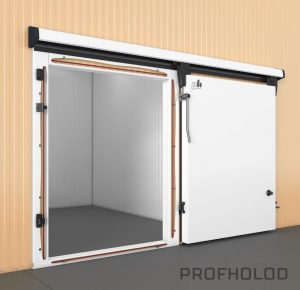Exploring the Importance of Cold Room Door Thickness
When it comes to maintaining optimal temperature and energy efficiency within a cold storage facility, every component plays a crucial role. One such integral component is the cold room door. The thickness of a cold room door is a critical factor that directly impacts its insulation properties and overall effectiveness. In this article, we delve into the significance of cold room door thickness, its impact on energy conservation, and the considerations that go into choosing the right door for your cold storage needs.
The Role of Cold Room Doors in Temperature Regulation

Cold storage rooms are utilized in various industries, including food storage, pharmaceuticals, and research. The primary purpose of these rooms is to maintain a controlled and consistent low temperature to preserve the quality and safety of the stored items. The cold room door acts as a barrier between the controlled environment inside the cold room and the external surroundings. Its primary function is to prevent the exchange of heat and humidity, thereby ensuring the temperature inside the room remains stable.
Impact of Door Thickness on Insulation
The insulation properties of a cold room door are heavily influenced by its thickness. Thicker doors generally provide better insulation and reduce heat transfer between the inside and outside environments. This insulation is crucial for preventing temperature fluctuations that could compromise the integrity of stored items. A thicker door can effectively prevent the infiltration of warmer air from outside, which is particularly important in climates where ambient temperatures vary significantly.
Considerations for Choosing the Right Door Thickness
When selecting a cold room door, several factors come into play. The choice of door thickness depends on various considerations, including the type of items stored, the frequency of door usage, and the desired energy efficiency. Here are some important factors to consider:
- Temperature Requirements: The required temperature inside the cold storage room dictates the level of insulation needed. Lower temperatures may necessitate thicker doors to maintain the desired conditions.
- Frequency of Use: High-traffic areas demand doors that are durable and well-insulated. Thicker doors can withstand frequent opening and closing without compromising the internal environment.
- Energy Efficiency: Thicker doors contribute to better energy efficiency by reducing the load on cooling systems. This can lead to significant cost savings over time.
- Material Composition: The materials used in the door’s construction also impact its insulating properties. Some materials offer superior insulation even with a moderate thickness.
Standard Cold Room Door Thickness
While there is no fixed standard for cold room door thickness, common practice suggests that doors for cold storage applications typically range from 100mm to 200mm (approximately 4 to 8 inches). However, the appropriate thickness may vary based on the factors mentioned earlier. It’s essential to consult with experts in cold storage solutions to determine the ideal door thickness for your specific requirements. For cold storage door designs see this.
The Bottom Line
In the realm of cold storage, the thickness of a cold room door plays a vital role in maintaining temperature stability and energy efficiency. The right door thickness can significantly enhance insulation properties, reduce heat exchange, and promote long-term cost savings. Selecting the appropriate door thickness involves careful consideration of temperature needs, usage frequency, and desired energy conservation goals. By making an informed choice, you can ensure that your cold storage facility operates efficiently while safeguarding the quality of the stored items. Remember, when it comes to cold room doors, thickness matters.

In conclusion, understanding the importance of cold room door thickness is crucial for anyone involved in cold storage management. The thickness of the door directly impacts its insulation capabilities, which in turn affects the overall efficiency of the cold storage facility. By carefully assessing your specific requirements and considering factors like temperature, door usage, and energy efficiency goals, you can make an informed decision about the appropriate door thickness for your cold storage needs. Ultimately, investing in the right cold room door thickness will contribute to maintaining optimal conditions and preserving the quality of the stored items.

Recent Comments